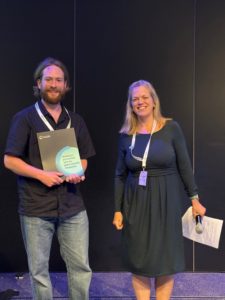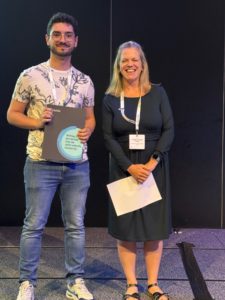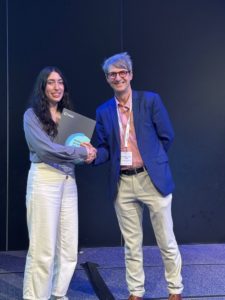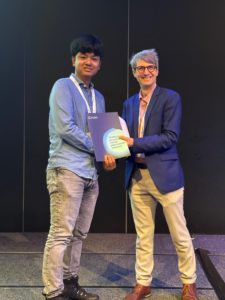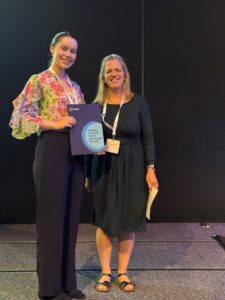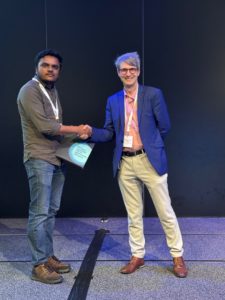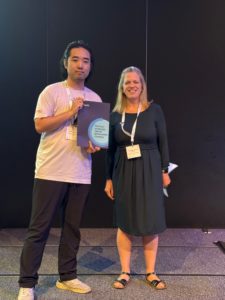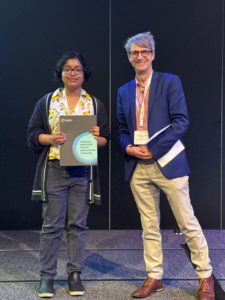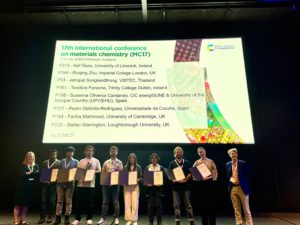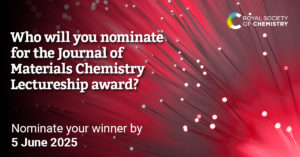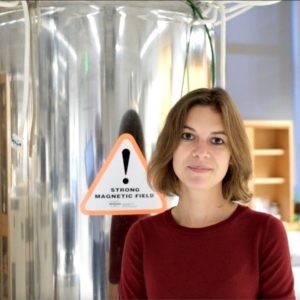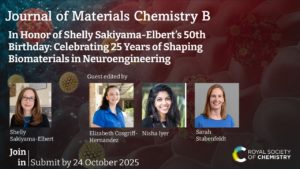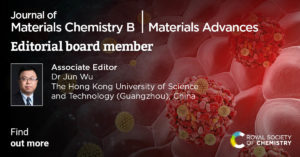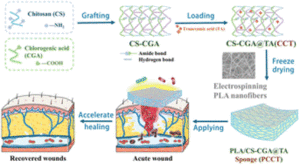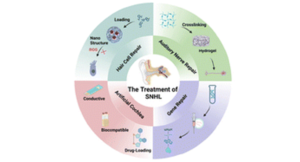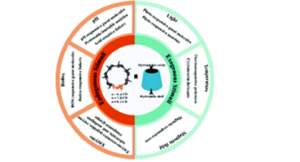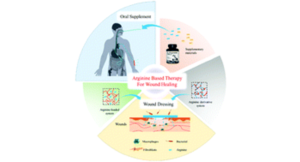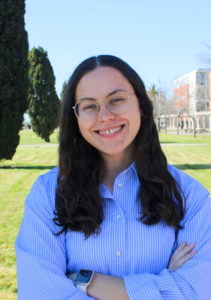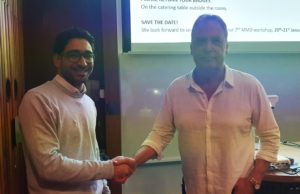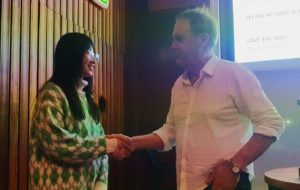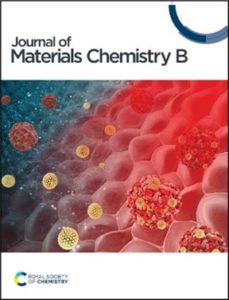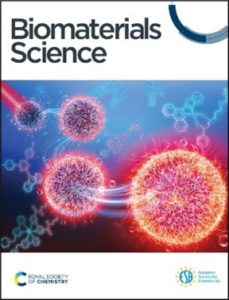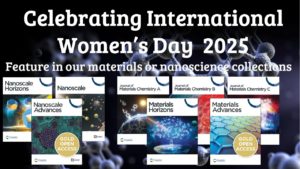Reflecting on the SupraLife RSC partnership
Hear from Dr João Borges (University of Aveiro, Portugal) who coordinated the SupraLife project
Funded by the European Union’s Horizon Europe research and innovation programme (Grant Agreement No. 101079482), the SupraLife project was a three-year initiative which brought together researchers from the University of Aveiro, the Eindhoven University of Technology and the University of Bordeaux and its affiliated entities Bordeaux INP and Centre National de la Recherche Scientifique (CNRS) with a focus on supramolecular biomaterials’ chemistry research. As the project comes to an end, we reflect on how collaborations from RSC journals have supported several of the SupraLife events and hear from Dr João Borges from the University of Aveiro who coordinated the project.

We interviewed SupraLife project coordinator, Dr Joao Borges (University of Aveiro, Portugal) to hear about the positive impact of RSC journal support on the SupraLife initiative
The initiative led to a number of events, including three summer schools and one final international conference held at the University of Aveiro, Portugal, supported by RSC journals Journal of Materials Chemistry B, Biomaterials Science, Materials Advances and ChemComm.
The scientific networking and training events not only brought together world-renowned researchers working on supramolecular and biomaterials chemistry fields to Aveiro but allowed for free training opportunities for students and early-career researchers across the university and beyond, addressing topics such as leadership, career development, scientific writing and publishing and mental health, to name a few.
‘The way we thought about the SupraLife events was about bringing together world-renowned scientists and students and early-career researchers and stimulating the exchange of knowledge and expertise, as well as mentorship in an informal atmosphere. In particular, each of the SupraLife events we organized in Aveiro, Portugal, gathered about 150 participants. We believe this is the right size to enable participants to meet one another and exchange with distinguished scientists in the field. In addition, the fact that the SupraLife events run without parallel sessions enabled the early-career researchers to attend a very focused meeting, present their research findings in front of and receive invaluable feedback from a specialized audience in moving forward their research,’ Dr Borges explains.
The RSC was delighted to support poster prize awards at the second and third summer , and the final international conference, to help recognise and congratulate leading early-career researchers in the field of supramolecular and biomaterials chemistry. The poster prize winners can be discovered on our blog for the second school, third school and the final international conference.
‘The support from the RSC journals in two schools and final international conference has been really important for SupraLife and the community of early-career researchers attending the events in different dimensions. For instance, in all these three events, the RSC journals sponsored the three best poster prizes assigned to young scientists, including offering a 1-year free RSC membership which is very important for supporting them in advancing their professional development,’ says Dr Borges.
 |
 |
Left: Supralife 2nd school poster prize winner, Catherine Meyer, with RSC staff, Zita Zachariah and Dr Joao Borges. Right: SupraLife final international school poster prize winner, Thibault Sampon with Dr Joao Borges
‘In my point-of-view, it is really important for young scientists to have their research work being recognized with an award. I mean, within academia it is very important and rewarding to receive prizes, honors and awards irrespectively on the career stage in which we are, but even more important for the young scientists who are in the infancy in their scientific careers. It is a stimulus for excelling in science and keeping on working in pursuing their dreams. It is not only the prize itself, but the recognition it entails and the support and advice they get from the RSC in advancing their careers’.
We were also delighted to collaborate with the organisers of the SupraLife events, Dr. João Borges (University of Aveiro, Portugal), Prof. Patricia Y. W. Dankers (Eindhoven University of Technology, the Netherlands), Prof. João F. Mano (University of Aveiro, Portugal) and Prof. Sébastien Lecommandoux (University of Bordeaux, France), on a themed collection published in Journal of Materials Chemistry B. The themed collection on ‘Bioinspired Functional Supramolecular Systems’ intended to provide an up-to-date platform for sharing latest developments in the field of bioinspired functional supramolecular systems. It also aimed to encourage more interdisciplinary research and collaborative efforts at the intersection of supramolecular chemistry, (bio)materials science, and biology to inspire breakthrough research in the fascinating field of bioinspired supramolecular systems aimed at more closely emulating the complexity and dynamics of natural biological systems and creating life-like material systems, as per the values of the SupraLife initiative.
We encourage you to explore the collection here: https://pubs.rsc.org/en/journals/articlecollectionlanding?sercode=tb&themeid=a1208a88-2407-46f0-945d-49cff462c807

‘[The collection] has been very well received by the community. To date, it has gathered over 48 articles, including an editorial, and provides an up-to-date platform for sharing latest developments in the field of bioinspired functional supramolecular systems.’
We asked Dr Borges why he approached the RSC to support the SupraLife schools and final international conference. ‘I knew that the RSC is very much into supporting young scientists and supporting their career growth so, I thought this would be a win-win situation. We could benefit in terms of sponsorship, not only in terms of poster prizes but also in terms of enabling networking opportunities to bring together and foster the exchange among students and early-career researchers in an informal atmosphere, as well as by hosting staff from the RSC. In fact, we not only hosted Dr. Zita Zachariah, who talked about scientific publishing and careers in the publishing world, but also Dr. Ale Palermo, Head of Global Inclusion at the RSC, who talked about the importance of imparting a culture of diversity, equity and inclusion in science and challenging the traditional measures of success.’
Overall, the collaborations between the RSC and the SupraLife events have been positive and have enabled the support of up-and-coming researchers working on supramolecular biomaterials’ chemistry research. While the project has come to an end, we are delighted to have supported the vision to encourage interdisciplinary collaborations and hope that researchers will consider publishing their latest supramolecular research with the RSC.
To find out more about the SupraLife initiative, we encourage you to read this blog from the CICECO at the University of Aveiro reflecting on the success of the program and explaining more about its intentions.
https://www.ciceco.ua.pt/?tabela=geral_article&menu=255&language=eng&id_article=2915












